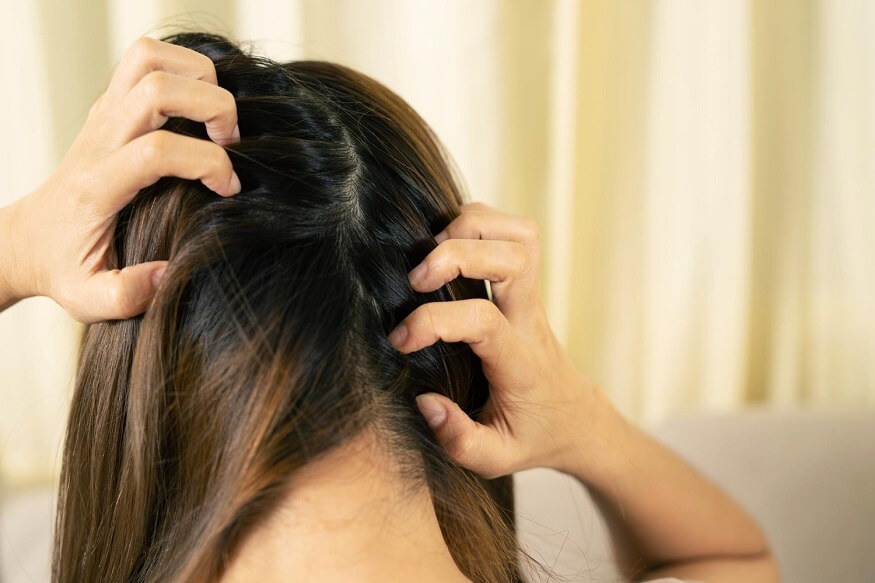When the topic of head lice arises, many are immediately filled with a sense of unease. These minuscule pests can be a cause of significant distress, especially for parents of school-going children. However, understanding head lice, their signs and symptoms, can help tackle the issue with confidence.
Also Read: Lisping in Children: Causes, Types, and Solutions
What are Head Lice?
Head lice are tiny, wingless insects that live close to the human scalp, feeding off our blood. They are primarily found in the hair and can spread easily, particularly amongst close-knit groups such as school children.
Identifying the Culprit
To be certain of an infestation, it is essential to differentiate between dandruff, hair products residue, and actual lice. The adult louse is roughly the size of a sesame seed and has a grey-brown colour. They can be spotted crawling around the hair but are notoriously swift and can elude detection. Instead, their eggs (often referred to as ‘nits’) are more commonly spotted. These are oval and adhere firmly to hair shafts.
The Role of Head Lice Combs
Head lice combs are instrumental in both identifying and treating head lice. These finely-toothed combs can trap the adult lice and nits, providing a clear indication of an infestation. If you suspect the presence of lice, using a head lice comb on wet, conditioned hair can help confirm the suspicion.
The Life Cycle of Head Lice
Understanding the life cycle of head lice can provide a more comprehensive picture of the problem at hand. Head lice undergo three primary stages: the egg (or nit), the nymph, and the adult louse.
Eggs (Nits): Nits are lice eggs attached to the hair shafts, often appearing as yellowish-white dots. They hatch within about a week, leading to the next stage.
Nymph: Once the nits hatch, they release nymphs, which are immature lice. They grow by feeding on human blood and, within a week, mature into adult lice.
Adult Louse: The fully grown lice feed on blood several times a day. They can live up to 30 days on a person’s head but will die within one or two days if they fall off.
Myths Surrounding Head Lice
There are several myths associated with head lice that need debunking:
Transmission: Contrary to popular belief, lice cannot fly or jump. They spread mainly through direct head-to-head contact.
Hygiene: Having lice is not indicative of poor hygiene. Lice infestation can happen to anyone, irrespective of how frequently they wash their hair.
Pets: Lice are specific to humans. Your pets are not carriers, and they cannot get infected from humans or vice versa.
Natural Lice Deterrents
While there is no guaranteed way to prevent lice, certain natural remedies may act as deterrents. For instance, some believe that a few drops of tea tree oil, lavender oil, or eucalyptus oil in your shampoo can discourage lice from making a home in your hair. However, it’s essential to be cautious and ensure no allergic reactions to these oils.
Managing the Emotional Toll
A lice infestation can sometimes carry an emotional or psychological toll, especially for children. They might feel embarrassed or stigmatized among their peers. It’s crucial for parents and caregivers to approach the situation with sensitivity, reassuring the child that having lice is not a reflection of their cleanliness or character. Schools and communities can play a role by ensuring there’s no shaming or unnecessary panic over such instances.
Recognising the Signs and Symptoms
The infestation of head lice often manifests itself through several tell-tale signs and symptoms:
Itchy Scalp: This is perhaps the most commonly recognised symptom. The itching is not caused by the biting of the lice but rather an allergic reaction to their saliva.
Red Bumps: Continuous scratching can lead to red bumps on the scalp, neck, and shoulders. In some severe cases, these might get infected.
Visible Lice and Nits: As mentioned, adult lice might be harder to spot, but the nits are usually visible close to the scalp, especially behind the ears and near the neckline.
Feeling of Something Moving: Some individuals report a tingling feeling or as if something is moving in their hair.
Lice on Clothing: Lice might sometimes be found on clothing, particularly around the collar or on hats.
Options for Lice Treatment
Thankfully, there’s an array of lice treatment options available:
Lice Shampoo: These are specially formulated shampoos that contain chemicals killing lice. It’s vital to follow the instructions meticulously.
Wet Combing: This involves using a head lice comb on wet, conditioned hair. Repeated combing (every few days) can help remove lice and nits.
Home Remedies: Some swear by using oils (like tea tree or coconut) to suffocate lice. While they might provide temporary relief, their effectiveness in completely eradicating lice is still debated.
It’s also worth noting that while cleaning is essential, lice don’t survive long off the human head. Excessive cleaning might not be as productive as focusing on the head.
Also Read: How to Boost Grip Strength in Children
Lice Care and Prevention
Prevention is always better than cure. Here are some lice care tips to prevent infestation:
Regular Checks: Especially for families with school-going children, using a head lice comb for routine checks can help catch an infestation early.
Educate and Inform: Teach children about the importance of not sharing personal items like combs, hats, or hair accessories.
Maintain Cleanliness: While lice can thrive on clean hair too, maintaining good hygiene can help in quicker identification and treatment.
Also Read: Why Do Children Bite and How to Stop Them From Biting
Collaborative Effort
To manage and reduce the spread of lice, especially in school settings, it’s vital for all parties involved – parents, teachers, school administrators, and children – to collaborate. Sharing information about a detected infestation can help others take preventative measures. Schools can host awareness sessions and facilitate regular checks.
Head lice, though a nuisance, are a common part of many people’s lives, especially in school environments. Being informed about their signs, symptoms, and available treatments can go a long way in managing and preventing these pesky invaders.
Ensuring our children are educated about such topics, as well as many others, is of paramount importance. EuroSchool focuses on a holistic approach to learning, ensuring children are prepared for all of life’s challenges.











